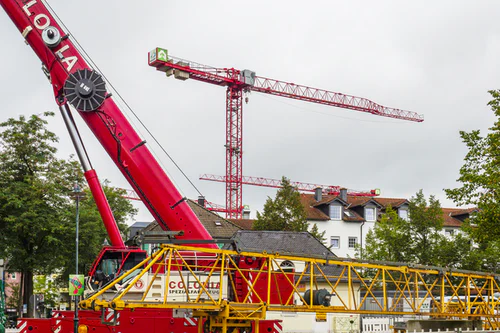You might be surprised to know that more than 50% of the reported work-related injuries in the United States are due to manual handling. This is specifically true for those employees who work in construction, transportation, agriculture, and storage. These people are at greater health risks and are more likely to suffer from some sort of injury. This is why purchasing safety equipment from a lifting equipment store can be quite beneficial. The lifting equipment contributes to a company’s safety standards while significantly reducing the risks of work-related injuries.

Read on to learn more about some top steps to ensure safer ways to lift and handle.
Assess the Environment and Work Situations
Before the employees start with their day, they ought to consider the weights that they are to lift in connection to the distance that they are to cover. This means that a thorough assessment of the situation is an essential step to safer lifting and weight handling. This also includes measuring the distance from the pick-up spot of the load to the point where it is to set down. The employees should refrain from lifting more than what they can safely manage. The frequency of their activity also plays a role in their well-being. A careful assessment of the work situation and workload includes evaluating what can be lifted safely and what will require lifting equipment. Lifting equipment can assist with the mechanical completion of the task instead of laboring with it manually. You might also want to switch to mechanical help for the coverage of greater distance.
Rearrangement of the Task
If the task at hand seems dangerous, it is always worth checking whether it can be rearranged instead of hot-headedly proceeding with it. If greater risks are involved, the employees might want to avoid lifting load altogether. Precautionary steps have to be taken so that potential risks of injury can be minimized. For instance, if a heavy load is involved, the employees might want to rearrange the task to push the weight instead of pulling it. The inclusion of more resting points in the face of more distance is also a good idea to minimize the potential risks of injury.
Rearrangement of the task includes the assessment of the nature of the weight. If a heavy load can be broken into smaller units, it will ease the task and decrease work-related injury risks. The employees also need to assess whether they can grasp the load easier by getting a better grasp on it. Another idea might be to pack up sharp items into solid boxes to prevent the objects.
Safer Lifting techniques
The implementation of safer lifting techniques includes the addition of lifting equipment. These will decrease the pressure on employees while improving their productivity. More work can be accomplished within less time, without imposing the risks of getting injured or damaging the loaded items. In addition to lifting equipment, the employees need to focus on adopting better and more stable body postures during their tasks.




Join the conversation: